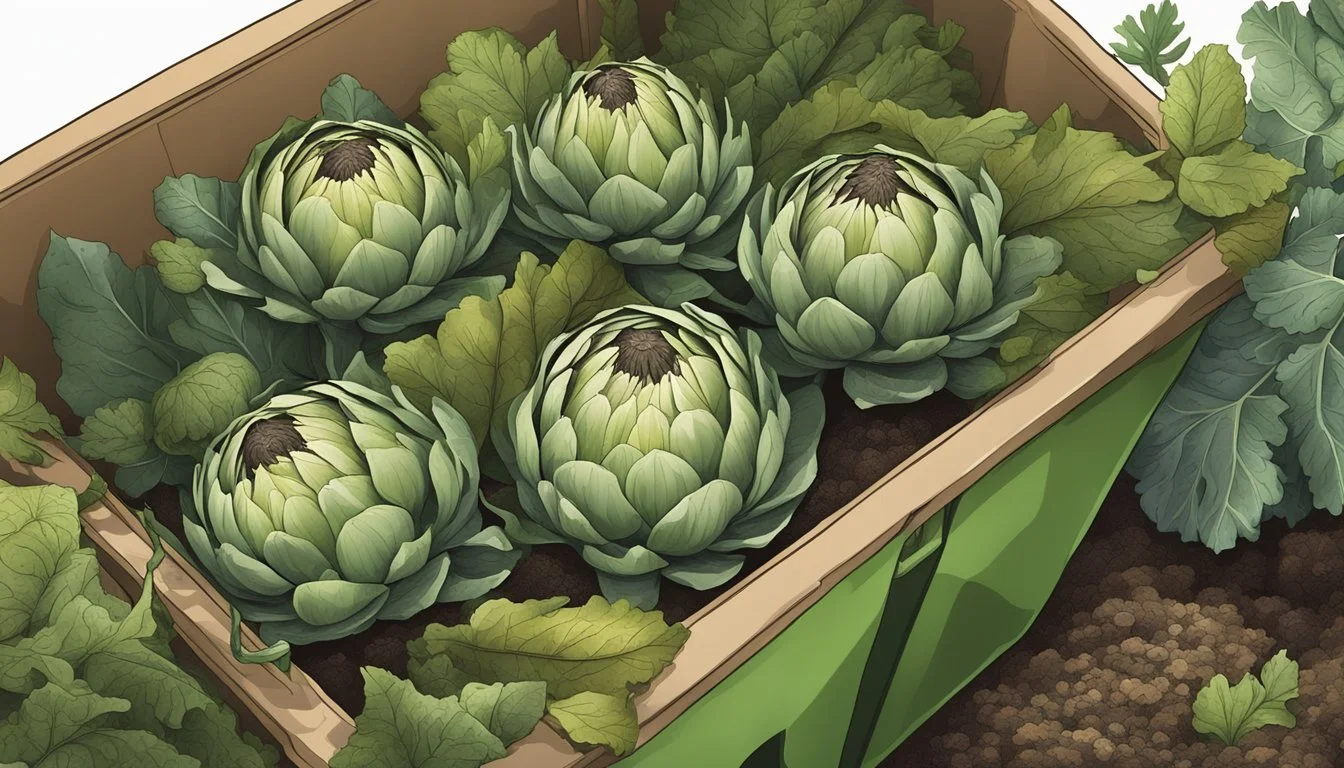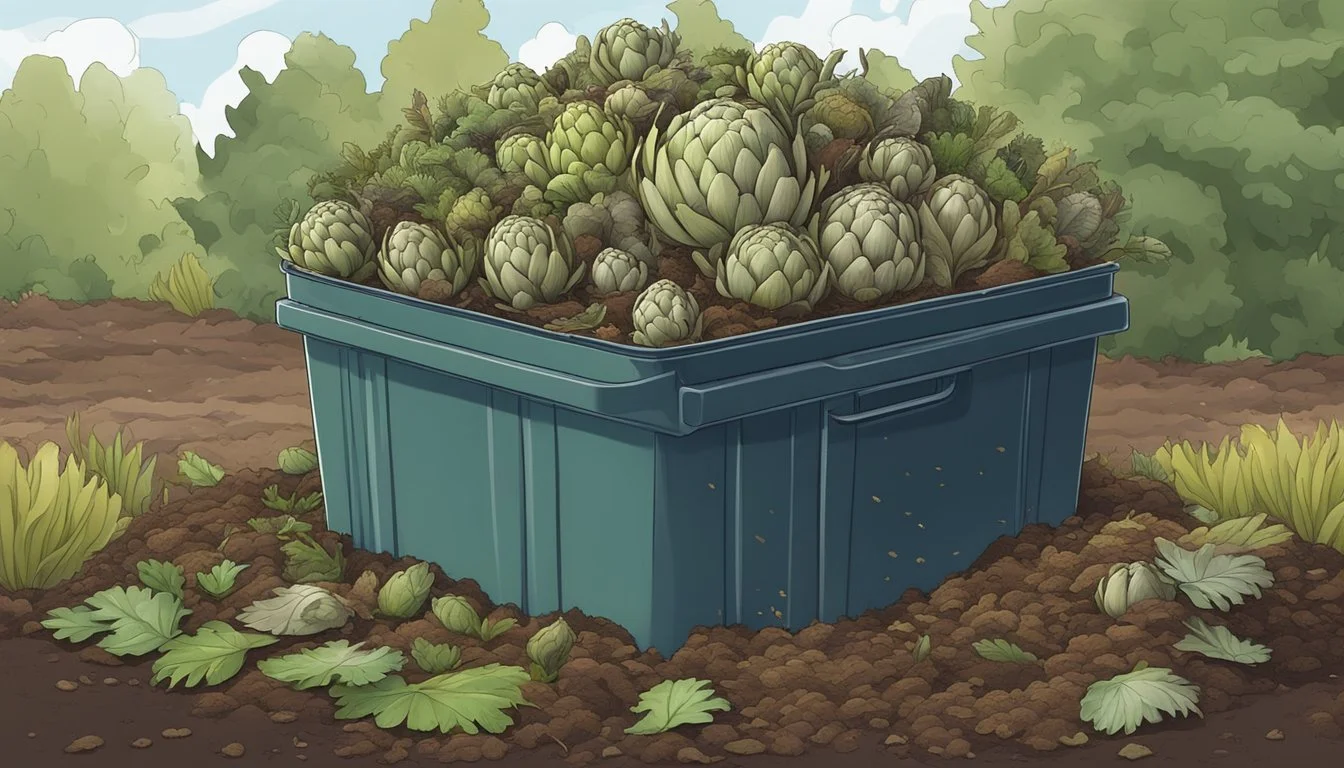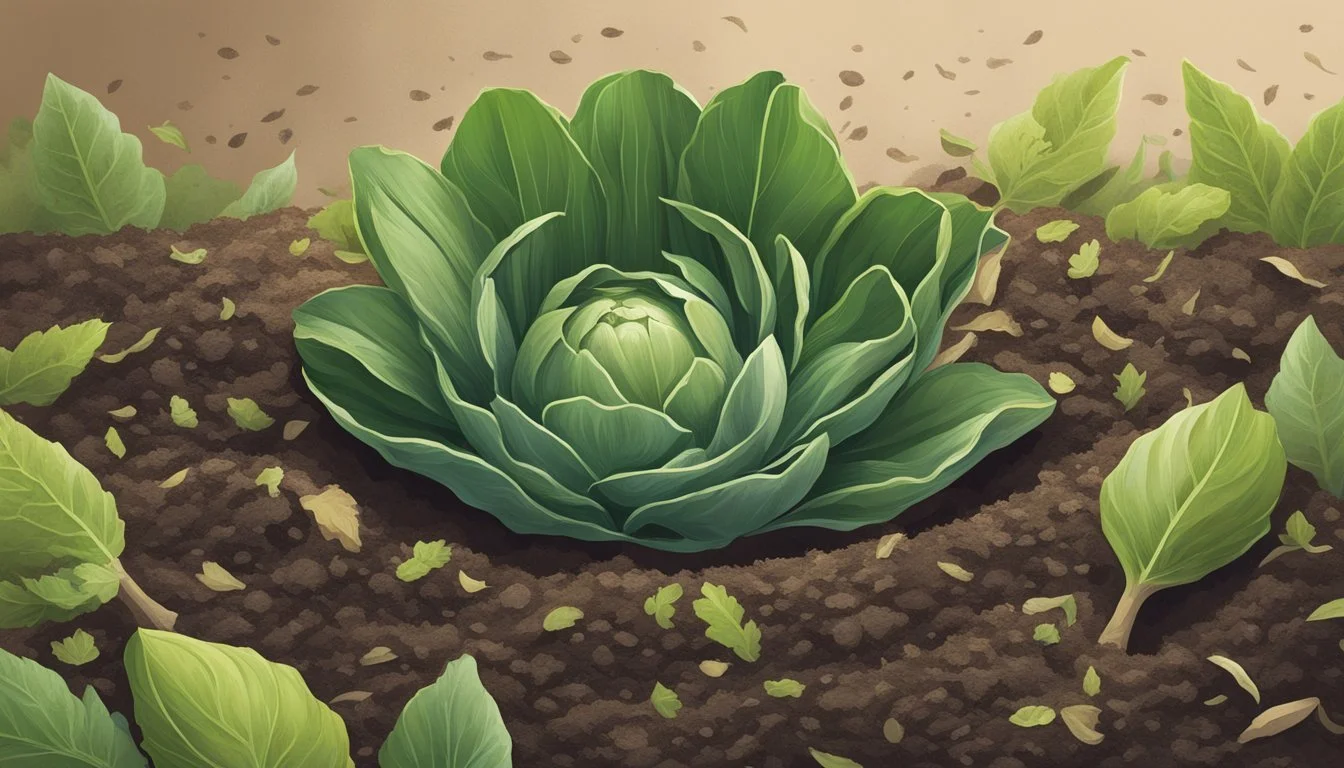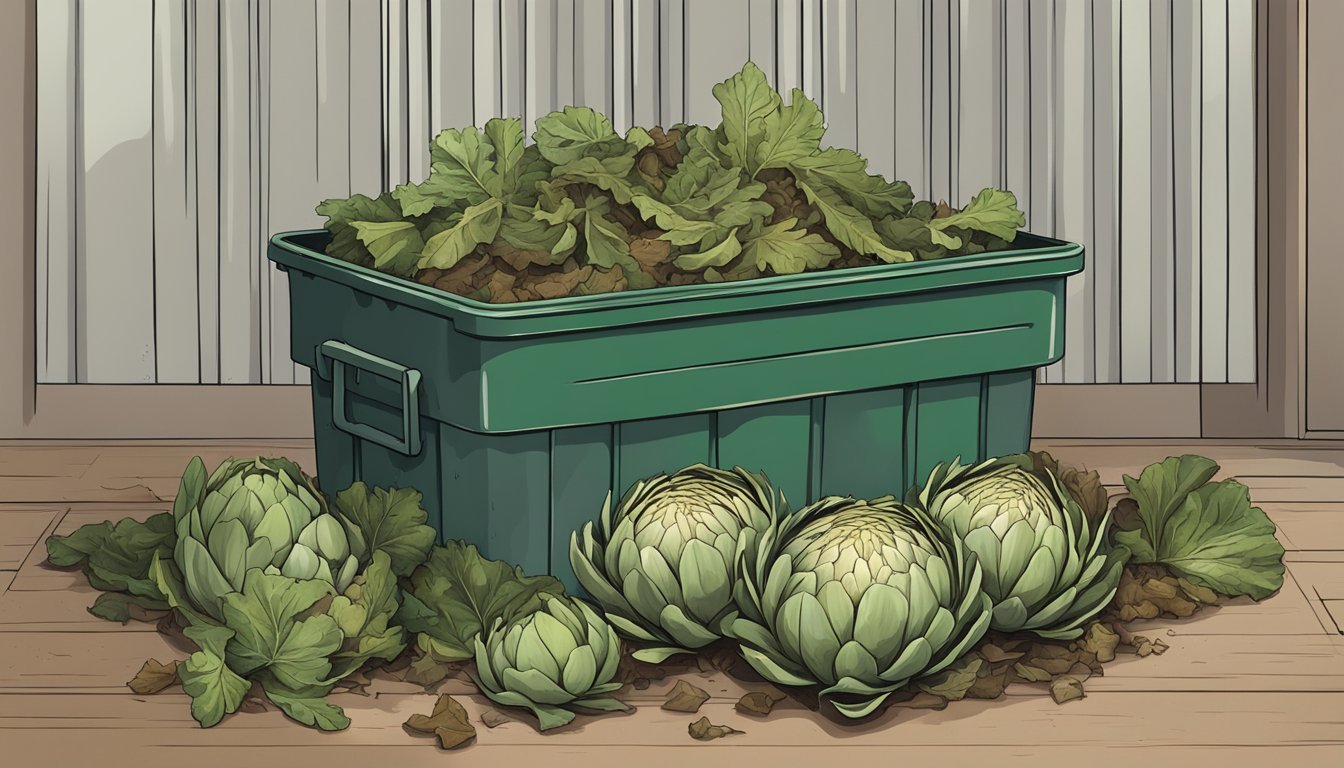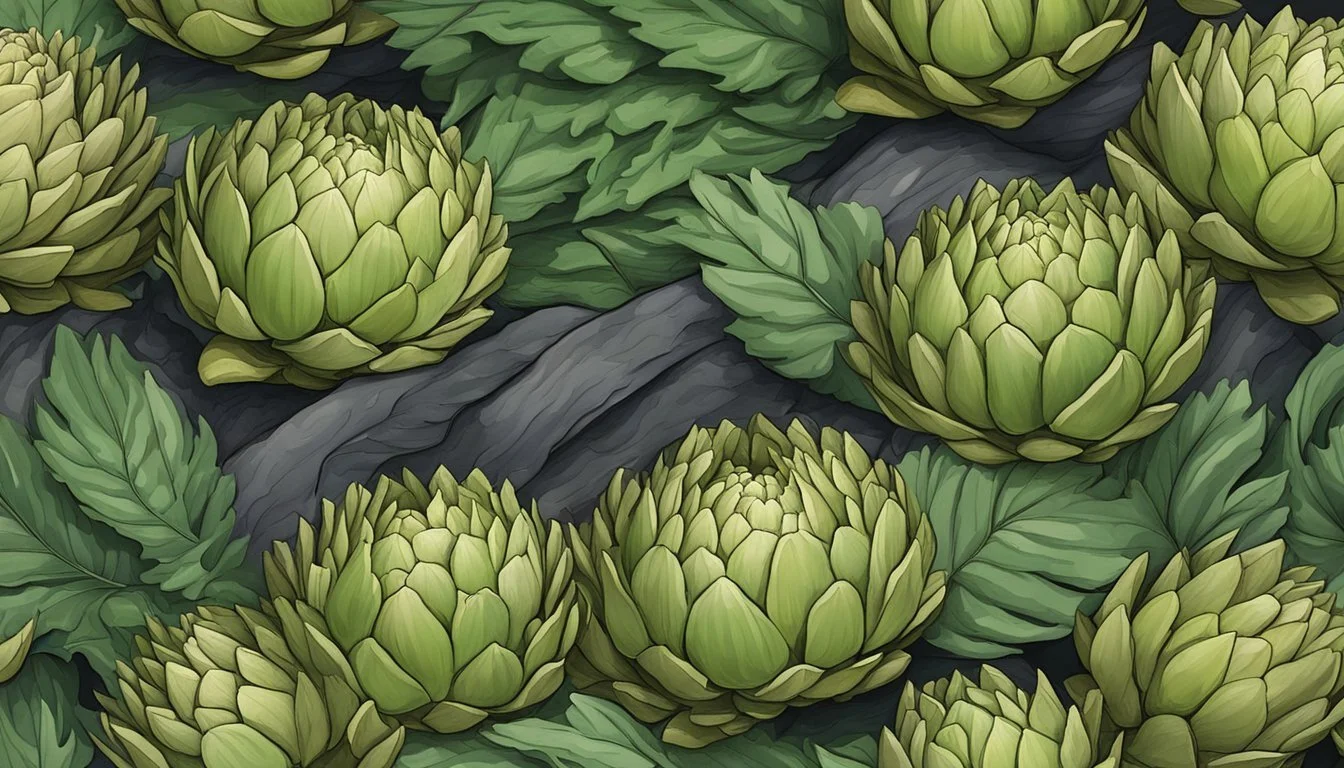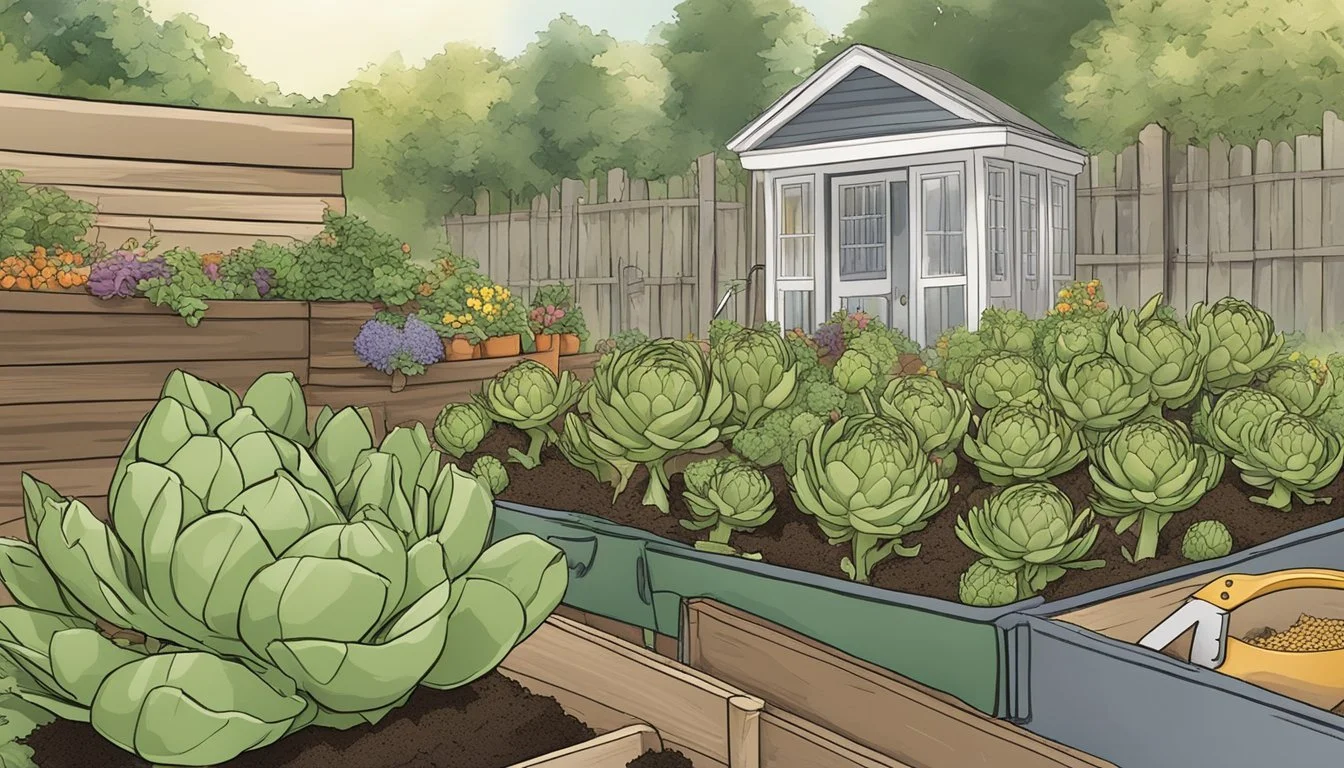Can You Compost Artichoke Leaves?
Unveiling the Benefits for Your Garden Soil
Artichoke leaves are a common byproduct after enjoying the heart of this edible thistle, and many gardeners and environmentally conscious individuals may wonder if these fibrous materials can join the symphony of green matter in their compost bins. The straightforward answer is yes, artichoke leaves can be composted. Notably, composting artichoke parts contributes to a more sustainable waste management practice, transforming kitchen scraps into valuable soil amendment.
As robust as they are, artichoke leaves have a more rigorous composition than softer vegetable scraps; hence, they require a bit more attention to ensure efficient decomposition. Chopping or tearing the leaves into smaller fragments aids this process and helps maintain a balanced carbon-to-nitrogen ratio, a crucial component for successful composting. When added to a diverse mixture of green and brown materials in a compost pile, artichoke leaves break down over time, enriching the resulting humus with their inherent nutrients.
Benefits of Composting Artichoke Leaves
Composting artichoke leaves is a valuable practice for gardeners. It contributes to the nutrient cycle and improves soil quality while disposing of kitchen waste responsibly.
Nutrient Recycling
Artichoke leaves are rich in organic matter, which decomposes into vital nutrients that plants require for growth. When added to a compost pile, the leaves break down over time, converting what was once waste into a potent mix of nitrogen, phosphorus, and potassium. These are essential nutrients that support plant health and robust growth. By composting, one can ensure these nutrients are recycled back into nature, promoting a sustainable gardening loop.
Nitrogen: Crucial for leaf growth
Phosphorus: Important for root and flower development
Potassium: Aids in overall plant health
Soil Enhancement
Incorporating composted artichoke leaves into the soil enhances its structure and fertility. Compost improves soil aeration and water retention, making the soil more conducive to plant roots. Additionally, adding this organic matter to the soil can help to gradually increase the soil's nutrient content, providing a steady supply of food for plants over time. By enhancing the soil with compost, gardeners can maintain a fertile and healthy garden that thrives with nature's rhythm.
Soil Aeration: Reduced compaction, better root growth
Water Retention: Balanced moisture levels
Continuous Nutrient Supply: Sustained plant nourishment
Pre-Composting Considerations
When adding artichoke leaves to a compost pile, it is essential to understand their specific characteristics and the unique challenges they present. Proper handling and preparation can ensure efficient decomposition.
Artichoke Leaf Characteristics
Artichoke leaves are distinct from other vegetable matter commonly added to compost. They contain high levels of lignin, which makes them tougher and slower to decompose. The soft "hearts" will break down much faster than the rigid, fibrous leaves. These leaves are lower in nitrogen, which is a crucial element for the composting process.
Composting Challenges
The challenges of composting artichoke leaves stem from their composition. Due to the high lignin content, these leaves require more effort to break down. Chopping or shredding them into smaller pieces before adding to the compost can help accelerate the decomposition rate. Balancing the carbon-to-nitrogen ratio is also critical. Artichoke leaves should be balanced with nitrogen-rich materials (greens) and carbon-rich materials (browns) to promote effective composting. Without this balance, the leaves may take significantly longer to compost.
Optimizing the Composting Process
To efficiently compost artichoke leaves, one must maintain proper balance between materials, ensure adequate airflow and moisture, and regulate temperature and pH within the compost pile.
Balancing Greens and Browns
Greens refer to nitrogen-rich materials like vegetable scraps, coffee grounds, and fresh plant matter such as artichoke leaves. On the other hand, Browns supply carbon, examples of which include dry leaves, straw, and cardboard. A commonly recommended ratio for effective composting is approximately 1 part greens to 15-30 parts browns by volume. To ensure a balanced compost pile:
Maintain a ratio of 1:15 to 1:30 (greens to browns) for efficient decomposition.
Shredding artichoke leaves can accelerate the process, converting this "green" material into useful compost faster.
Maintaining Airflow and Moisture Levels
Airflow within a compost pile is crucial for aerobic bacteria to thrive and break down organic matter. Compost should feel moist, like a wrung-out sponge, yet not waterlogged, as excess moisture can lead to anaerobic conditions and odor. Here's what should be kept in mind:
Turn the pile regularly to integrate air; aim to do this once every 1-2 weeks.
If compost is too dry, add water sparingly to reach the ideal moisture level.
Regulating Temperature and pH
Temperature is a sign of microbial activity within a compost pile. A temperature between 130-160°F (55-70°C) is ideal for pathogen and seed destruction, and effective composting. For pH, most compost processes function optimally in a slightly acidic to neutral range (pH 6-7.5). Here are ways to manage these factors:
Monitor the pile's temperature using a compost thermometer.
If needed, turn the pile to disperse heat and bring cooler material to the center.
To adjust pH, add lime to raise it or add more Browns to lower it.
Composting Methods for Artichoke Leaves
Artichoke leaves can be successfully composted using various methods that cater to different conditions and availability of resources. The approaches differ in the pace of decomposition and maintenance efforts required.
Hot Composting
Hot composting is an accelerated process that requires maintaining a temperature between 135°F and 160°F to expedite the breakdown of organic matter, including artichoke leaves. Steps for hot composting include:
Layering: Alternating layers of green matter, like artichoke leaves, with brown matter to balance nitrogen and carbon.
Turning: Regularly aerating the pile to maintain oxygen levels and distribute heat evenly.
Moisture: Keeping the compost damp but not waterlogged to support microbial activity.
This method can decompose artichoke leaves in as little as a few weeks to a couple of months.
Cold Composting
Cold composting is a less intensive process suitable for a gardener without a strict timeline. It involves:
Layering materials: Simply adding artichoke leaves and other compostables to the bin without maintaining a specific carbon-to-nitrogen ratio.
Natural decomposition: The compost will break down over time with the help of natural organisms, requiring little to no turning.
Timeframe: The process typically takes anywhere from six months to a year, potentially longer in the colder months of fall and winter.
Using this method, the gardener allows the natural seasonal cycles to aid in breaking down the artichoke leaves into compost.
Vermicomposting
Vermicomposting uses red wiggler worms to process organic waste, including artichoke leaves. The key points to remember for vermicomposting include:
Preparation: Chopping the artichoke leaves finely can help worms consume them more easily.
Environment: Maintaining a worm bin that is moist, cool, and dark supports optimal worm activity.
Feeding: Gradually adding leaves to avoid overfeeding and potential toxicity for the worms.
Typically, this method takes one to two months for worms to convert artichoke leaves into nutrient-rich compost.
Utilizing Composted Artichoke Leaves
Composted artichoke leaves provide a nutrient-rich resource for gardening and landscaping. They become a greatly beneficial component for soil health when used correctly.
As Mulch
When used as mulch, composted artichoke leaves help retain soil moisture, suppress weeds, and provide a slow release of nutrients as they continue to decompose. This helps to conserve water and reduces the garden's overall maintenance needs.
Benefits of using composted artichoke leaves as mulch:
Retains soil moisture
Suppresses weed growth
Slowly releases nutrients into the soil
As Soil Amendment
Incorporating composted artichoke leaves into the soil as an amendment improves soil structure by increasing aeration and water retention. This practice encourages robust plant roots and can enhance the microbial balance within the soil.
How to use composted artichoke leaves in soil:
Spread a layer over the garden bed.
Gently till into the top inches of soil.
Allow time for integration before planting.
As Plant Fertilizer
Composted artichoke leaves serve as a gentle, effective fertilizer, slowly providing essential nutrients like nitrogen, phosphorus, and potassium to the plants. The decomposition process breaks down the leaves into a form readily utilized by plant roots.
Nutrients supplied by composted artichoke leaves:
Nitrogen (N): Encourages leafy growth
Phosphorus (P): Supports root and flower development
Potassium (K): Aids in overall plant health and disease resistance
Composting Artichoke Plant Parts
Artichoke plant parts like flowers, buds, and tough outer leaves offer valuable nutrients to a compost pile when properly broken down. They help achieve the desired carbon to nitrogen ratio essential for effective composting.
Composting Artichoke Flowers and Buds
Artichoke flowers and buds, which are not typically consumed, can be integrated into compost. Both the soft parts and tougher aspects of these plant parts decompose, contributing nitrogen to the compost mix. One should ensure these components are cut into smaller pieces to expedite the breakdown process.
Artichoke Flowers: Include in compost but chop for better decomposition.
Artichoke Buds: Add directly to compost; chopping helps quicker assimilation.
Composting Tough Outer Leaves
The tough outer leaves of artichokes (What wine goes well with artichokes?)are fibrous and require more time to break down in a compost pile. It is advisable to shred these leaves into smaller sections before adding them to compost to speed up their decomposition.
Tough Outer Leaves:
Shred or chop to enhance decomposition rate.
Balance with carbon-rich materials to maintain a healthy compost.
Troubleshooting Common Problems
In composting artichoke leaves, gardeners may encounter specific pests and diseases, as well as challenges with odor and decomposition. Effective problem-solving requires a proactive approach, focusing on prevention and timely interventions.
Dealing With Pests and Diseases
Aphids and Slugs: These pests are particularly fond of artichoke plants. Aphids can be controlled by introducing beneficial insects like ladybugs or by spraying a mixture of water and a few drops of dish soap onto the leaves. Slugs demand a more direct approach; handpicking them at night or using barriers such as crushed eggshells can prevent their access to the plants.
Diseases: Artichoke leaves are susceptible to fungal diseases, which can also transfer to the compost pile. Botrytis rot is a condition that causes plant crowns to rot and become slimy. Remove diseased leaves before composting, and maintain good air circulation to prevent fungal growth.
Managing Odor and Decomposition Issues
Odor: A foul odor is often a sign of anaerobic decomposition due to excess moisture or insufficient aeration. Turning the pile regularly introduces oxygen and can help eliminate the smell. Moreover, balancing green materials rich in nitrogen with brown materials rich in lignin ensures a healthier composting process.
Decomposition: Slow decomposition might occur when there's a lack of nitrogen-rich materials, known as greens. Artichoke leaves are high in nitrogen; by ensuring their proper incorporation with carbon-rich (brown) materials like dried leaves or straw, the composting process can be optimized. Keep the pile moist but not wet, and turn it regularly to maintain aeration and facilitate quicker breakdown.
Advanced Tips for Expert Gardeners
Expert gardeners understand that the key to successful composting, including composting artichoke leaves, lies in adapting to local climate conditions and enriching compost with the right materials.
Composting in Different Climates
In colder climates, maintaining composting activity throughout the winter can be challenging. Gardeners should insulate their compost piles with a thick layer of straw or leaves to retain heat. Conversely, those in hotter climates need to ensure that their compost piles do not dry out. Regular watering and proper shading can prevent desiccation and maintain composting efficacy.
Tips for Specific Climates:
Temperate Climates: Balance green and brown materials; turn the pile frequently.
Arid Climates: Maximise moisture retention with straw layers; cover compost to reduce evaporation.
Humid/Tropical Climates: Ensure adequate aeration to prevent anaerobic conditions; use a compost tumbler if necessary.
Enhancing Compost with Additional Materials
Expert gardeners can enhance their compost by adding coffee grounds, which introduce nitrogen and improve the overall nutrient profile. While composting artichoke leaves, incorporating a balanced mixture of materials is pivotal. A suggested ratio is to use one part green (artichoke leaves, coffee grounds) to 25-30 parts brown (dry leaves, straw).
Material Balance Chart:
Material Type Examples Purpose Green Artichoke leaves, coffee grounds Provide nitrogen and moisture Brown Straw, dry leaves Carbon source, aeration, structure
Remember, adjusting the ratios depending on the specific conditions and observing how the compost reacts over time is essential. It's this careful monitoring and adjustment that differentiates the novice from the expert composter.

